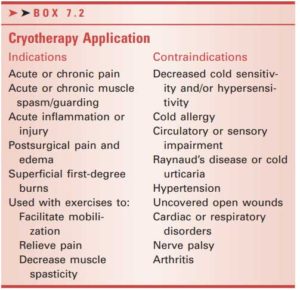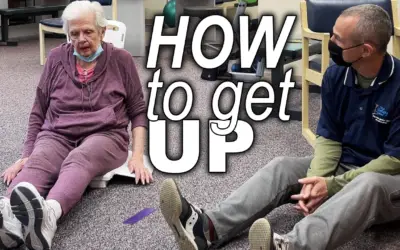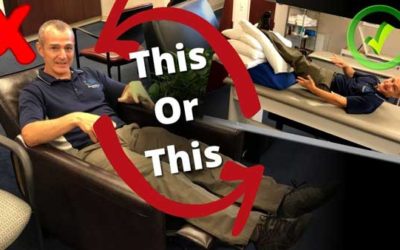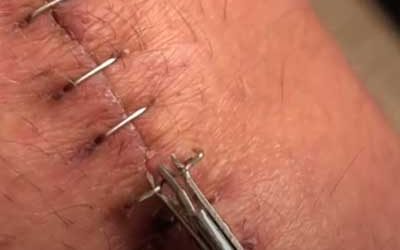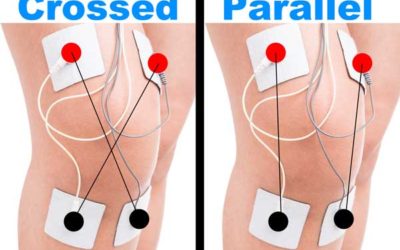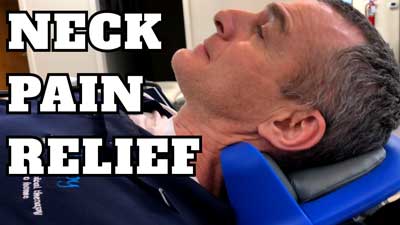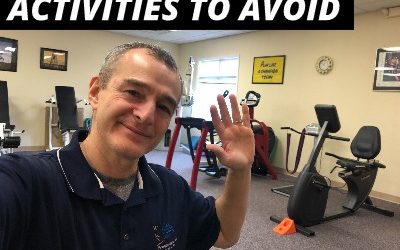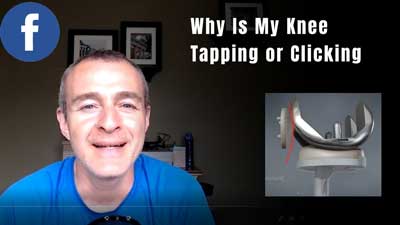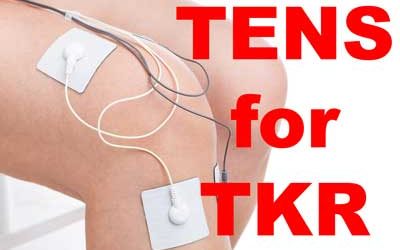How long should I ICE my knee after knee replacement?
Article Updated 06/08/2022
How long should I ice my knee after knee replacement surgery?
After a total knee replacement surgery many surgeons will often recommend icing the knee as often as possible.
In this article, I will review the current myths and misconceptions about using cryotherapy after knee replacement surgery and what is the number 1 reason to consider icing.
3 of the Most Common Myths Around Icing After Surgery:
- Icing reduces inflammation
- Icing reduces swelling
- Icing helps to heal injured tissue
3 Actual Truths Behind Icing After Surgery:
- Cold therapy will numb the superficial nerve endings which may reduce the experience of pain.
- Cold therapy provides a novel stimulus for the central nervous system and may interrupt the transmission of information being perceived as threatening.
- Cold therapy is inexpensive and easy to use at home. It is convenient and provides you with a sense of control which may help empower you to take control of your pain.
What does the research suggest?
A 2007 study determined that only an analgesic effect was demonstrated with continuous cooling. This study also determined that 4 degrees Celsius (39.2 degrees Fahrenheit) was determined to be comfortable for most patients. [1] A 2012 study analyzing the possible benefits of R.I.C.E. was inconclusive. [2]
How long should I place ice on my knee?
According to Therapeutic Modalities “Cryotherapy is usually applied for 20 to 30 minutes for maximum cooling of both superficial and deep tissues.” In many physical therapy clinics, the common recommendation is 10-minutes of sustained application. A couple of considerations to determine the length of time ice is placed on your post-surgical knee include
- How cold is the ice pack?
- Are you placing a piece of cloth or other covering between the ice and your skin?
- Are you applying ice to a part of the body with a thicker fatty tissue layer?
When should an ice pack be avoided?
The following table comes from Therapeutic Modalities section II page 168 –
Myth Buster #1 – Cryotherapy does not reduce inflammation.
Inflammation is a chemical process within the body and is largely regulated by the immune system. Placing an ice pack on the skin to change the skin’s temperature will not significantly impact the chemical response to tissue injury and repair known as inflammation.
Myth Buster #2 – Icing reduces swelling
Swelling and edema are also regulated by chemical changes at the site of injury. Changes in temperature applied to the skin can not significantly change the chemistry deep under the skin. If a noticeable change in swelling is noted upon removal of an ice pack it is largely due to the mechanical compression of the ice pack squeezing the fluid out of the area and not due to the cold temperature of the ice pack.
Myth Buster #3 – Icing improves healing.
Since the healing response is autoregulated by the body’s immune system, changes in superficial skin temperature have not been shown to significantly affect healing times. The best-known evidence of healing tissue following surgery includes a short episode of rest followed by an active recovery guided by a physical therapist, occupational therapist, or other qualified healthcare professional.
Summary:
Based on the available evidence, I would recommend using either cold therapy or heat therapy solely for an analgesic benefit. I would advise against taking time away from a more active recovery to sit with an ice pack or heating pad on your knee. If cold or warmth feels good and helps bring relief between bouts of activity these modalities are generally considered low risk for complications and inexpensive.
The bottom line is to do what feels good while you are resting, but stay active and keep moving when possible.
Facebook Group Comments
Another trick that helped me, was carrying an old fashion ice bag around and keeping ice on my knees all day even while going on excursions. Most restaurants and QT‘s gas station will let you fill up a cup and pour it into your ice bag. This bag CVS
Cited References:

Anthony Maritato, PT
Physical Therapist
Anthony Maritato, PT has been a licensed physical therapist and private practice owner since 2006. Ohio license #PT011602.
Anthony has been passionate about helping patients recover from total knee replacement surgery as well as rotator cuff repair surgery.
About the Author -
Anthony Maritato, PT has been a licensed physical therapist since 2006. He specializes in post surgical care and rehabilitation of total knee replacement and rotator cuff repair surgery.
Mr. Maritato is also nationally recognized as a therapist educator teaching courses related to Medicare reimbursement, contracting, and documentation.
Total Therapy Solutions LLC is Tony's primary practice which he owns with his wife Kathy who is also a licensed physical therapist.
More Blog Posts …
Top 3 Devices To Help Get An Elderly Person Up From The Floor
3 Best Devices in 2021 To Help An Elderly Person UP from the Floor After a Fall. Under $100, Under $1,000, and Over $2,000
Lymphedema LIVE Class Registration
WHAT: In this LIVE class you will learn what you can do to manage swelling, reduce pain, and improve healing after a total knee replacement surgery. Dr. Andrea Leifer, PT, CLT-LANA is a lymphedema expert and educator. WHEN: March 31, 2021 at 3PM EST WHERE: Online Zoom...
10 Questions About Leg Elevation After Knee Surgery
Physical Therapist Anthony Maritato, PT Recommends the 3 BEST leg elevation pillows after knee replacement surgery | 10 Common Questions Patients Ask
Does It Hurt To Have Staples Removed After Knee Replacement Surgery
Removing Staples After Knee Replacement Surgery Staple removal is often painless and quick. In the following video a person removes his staples at home, but it is always recommended you allow your physician or surgical team remove the staples in their office.Why Are...
BEST Tens Placement for Knee Pain
Is TENS a Good Way to Reduce Knee Pain? Transcutaneous Electrical Nerve Stimulation (TENS) is a non-invasive, drug-free method for pain relief that has been widely used to manage various types of pain, including knee pain. TENS therapy involves sending low-voltage...
How many times a day can you do Neck Traction
Neck (cervical) traction is most commonly prescribed in 10 to 20 minute episodes. In this article I share the BEST positions to use cervical traction and what you NEED to AVOID when using it.
Which Activities Should I Avoid After Total Knee Replacement?
Click here to see a list of activities you should avoid after total knee replacement as well as a BUNCH of activities you may ENJOY.
Why Does my Knee Replacement Make Noise?
Would you like to know why your knee replacement makes noise? Is it a grinding? Is it a clicking? Or is it a popping? Snap, crackle, pop may be common after a total knee replacement. Read on to learn why-
Is tens SAFE to use for knee pain?
Have you been wondering if a TENS unit could reduce knee pain associated with arthritis? A TENS unit may be a great drug free way to reduce pain following a total knee replacement. In this article we will discuss how and when to use a TENS unit for drug free pain relief of knee pain.
Sleeping After Knee Replacement – 3 Best Positions
Finding a comfortable sleeping position after a knee replacement can be challenging. The most common advice is to sleep flat on your back with your surgical knee straight and elevated above your heart. To achieve this, many surgeons recommend propping a pillow under...
